Windows Input Experience is a process or service that effectively handles user inputs from human interface devices (HID) like physical and virtual keyboards, mouse, touchscreens, touchpads, etc. Like many other OS processes, it also runs in the background and initiates as soon as the system boots. However, there are instances wherein the process gets suspended automatically or consumes excessive memory, affecting the performance and overall efficiency of the system.
In this post, we will share how to fix the issue where Windows Input Experience gets suspended or causes high memory usage.
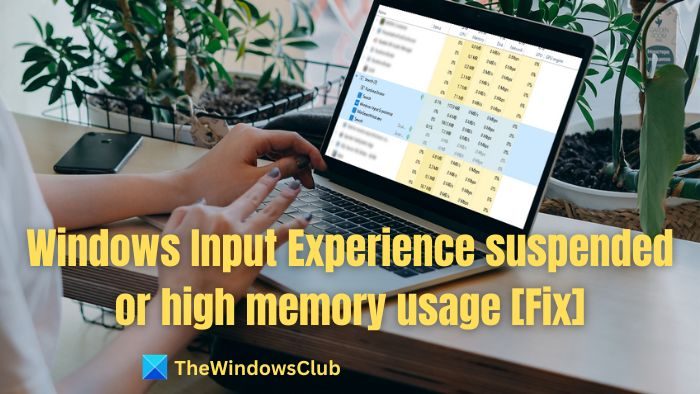
The Windows Input Experience Service doesn’t have a user interface but associates itself with performing various essential system tasks and functions related to the input devices. It helps Windows understand the meaning of each keystroke, click, or tap entered from the user’s end so that the necessary actions are performed against these inputs.
What causes high memory usage in Windows Input Experience?
- Memory Leakage Issues: Memory Leakage refers to situations wherein applications or processes, even after their termination, retain the memory allocated to them during their execution. Such events can significantly affect the performance of the system as it reduce the amount of available memory.
- Language Pack Installations: Language packs are additional language-based resources that help users view the OS or application interfaces in multiple languages without changing the system. However, if too many language packs are installed in a system, memory consumption for Windows Input Experience might increase.
- Software Conflicts: Various software applications or services use the Windows Input Experience for user inputs to execute its general functions, causing software conflicts. Also, conflicting software might store redundant information in the memory, leading to high memory usage as they maintain separate copies of the same information in the memory.
- Incompatible or Outdated Drivers: Old, incompatible, or outdated drivers for input devices may not synchronize with the latest OS updates as they lack the improvements and optimizations introduced in the latest versions. In such cases, drivers may consume more memory or system resources than usual for routine operations as they lack the advancements.
Fix Windows Input Experience suspended or high memory usage
To resolve high memory usage issues for the Windows input experience, removing Windows components that are rarely used or not used at all is best. These components cause high memory consumption.
- Uninstall Language packs
- Disable unused Input methods
- Restart Input Experience service
We suggest creating a system restore point before going ahead.
1] Uninstall Language packs
Every installed language pack may have associated background processes or services that consume system memory. Uninstalling them can help free up memory space and optimize system resources.
Uninstall using Windows settings
- Press the Windows+I keys together to open the Settings
- Click on the Time and Language option on the left.
- Click on Language and Region on the right pane.
- Click on the ellipsis(…) beside the language to be removed and select Remove.
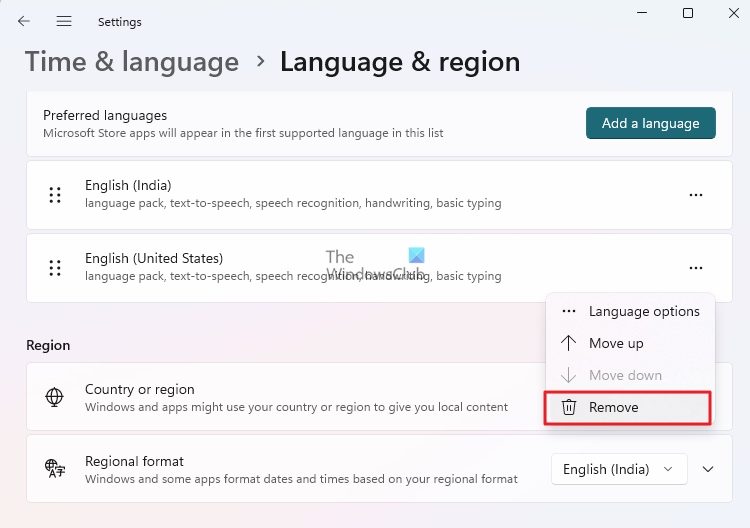
- Restart the system for the changes to take effect.
Uninstall using Windows PowerShell
- Open PowerShell or Windows Terminal
- Enter the below commands in the same order as mentioned:
Get-WinUserLanguageList Uninstall –Language <language_tag>
The first command displays the list of language packs installed on the system and their language tags. Language Tags happen to be the codes used by Windows to refer to each of the language packages.
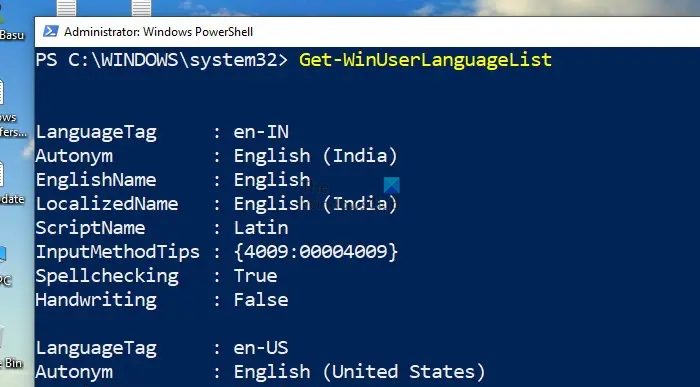
The second command uninstalls the language for the given language tag. For example, if we want to uninstall the English (United States) language for which the language tag is en-US, the below-mentioned command needs to be entered on the Windows Terminal:
Uninstall -Language en-US
Read: Fix: Cannot remove a Language from Windows.
2] Disable unused Input methods
Many input methods and input-assisting technologies, like a light pen, On-screen keyboards, or Narrator, use the Windows Input Experience to function. Like language packs, each has its own background processes that run continuously as long as the system is powered on, consuming a considerable amount of system resources, including memory.
Hence, removing the unused input methods can free up the system memory, thereby leading to improved system performance.
Disable On-Screen Keyboards
- Type Settings by clicking on the Search icon on the Desktop.
- In the Settings window, click on Accessibility > Keyboard.
- On the right pane, turn OFF the Use the On-screen Keyboard option.
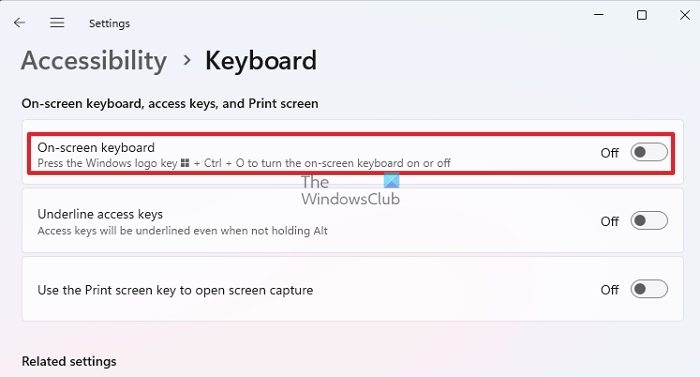
Alternatively, pressing Win+Ctrl+O can also disable the On-Screen Keyboard
Disable the Narrator
- Type Settings by clicking on the Search icon on the Desktop.
- In the Settings window, click on Accessibility.
- Choose Narrator on the right pane and toggle the option to turn it OFF.
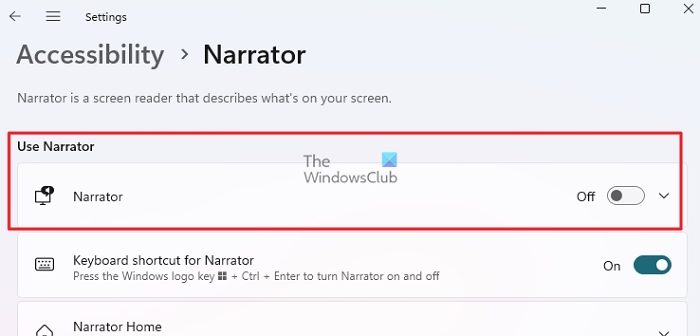
3] Restart Input Experience service
Restarting the Windows Service for Input Experience can reinitialize or reset the system resources it has been holding. Windows’s Touch Keyboard and Handwriting Panel Service handles the touch keyboard and handwriting input functionalities. To restart the service:
- Open the Task Manager by pressing the Ctrl+Shift+Esc keys.
- Click on the Services Tab and look for Touch Keyboard and Handwriting Panel Service.
- Once located, right-click on the service and click on Restart.
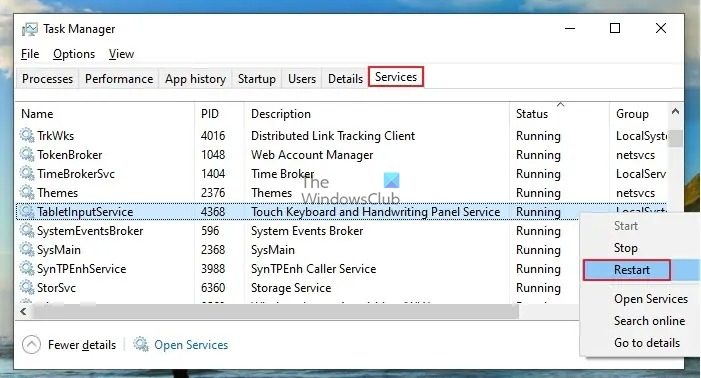
I hope the post was helpful and you resolved the issue.
Is Windows Input Experience a virus?
Windows Input Experience is not a virus or malware but a service or program responsible for handling user inputs from mouse, keyboard, and other Human Interface Devices.
Can you disable Windows Input Experience?
It is possible to disable the Windows Input Experience Service from the registry. However, disabling it may cause hardware issues, especially with input devices.
Is Windows Input Experience necessary?
Windows Input Experience is necessary for the input devices, like the mouse, keyboard, virtual keyboard, etc., to function correctly.
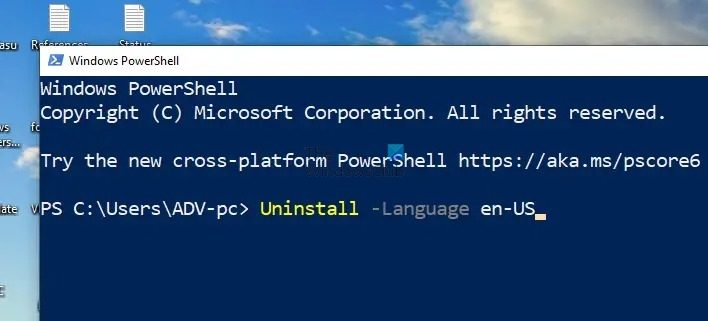
Leave a Reply